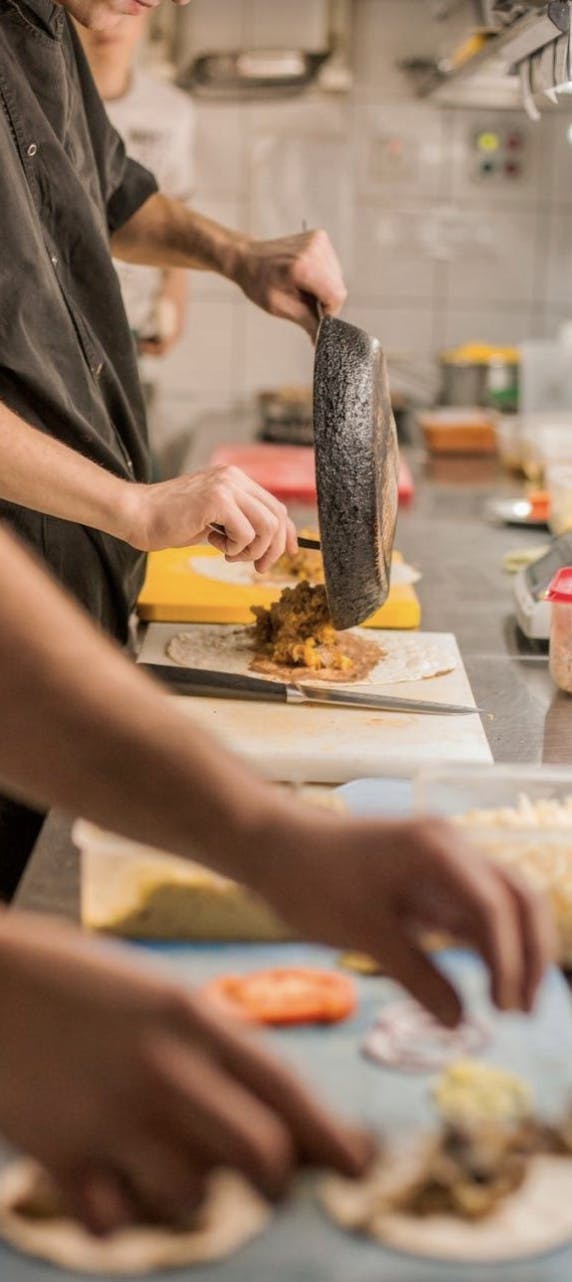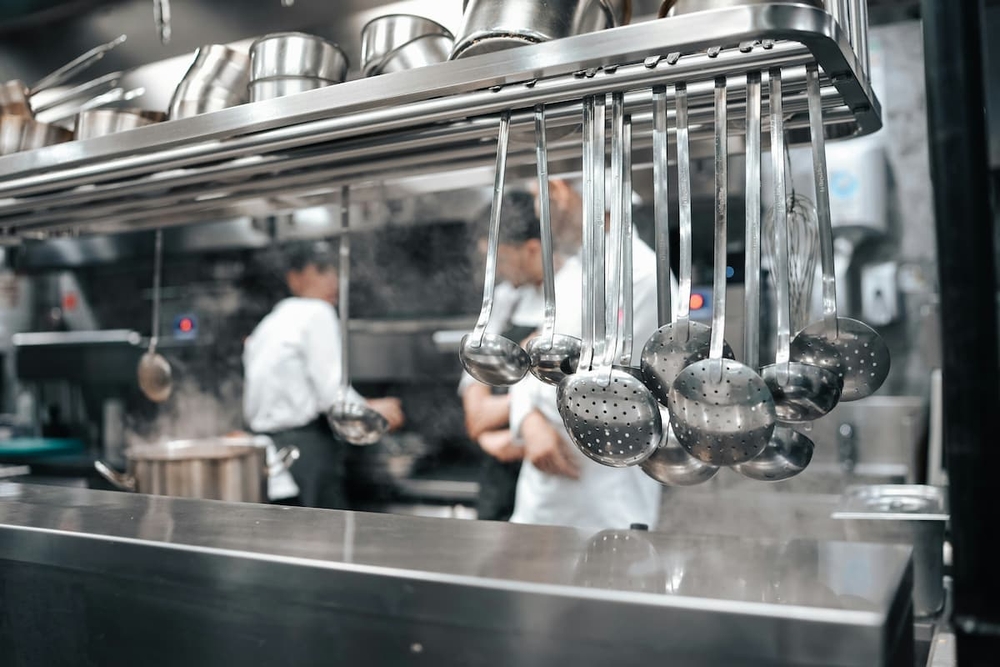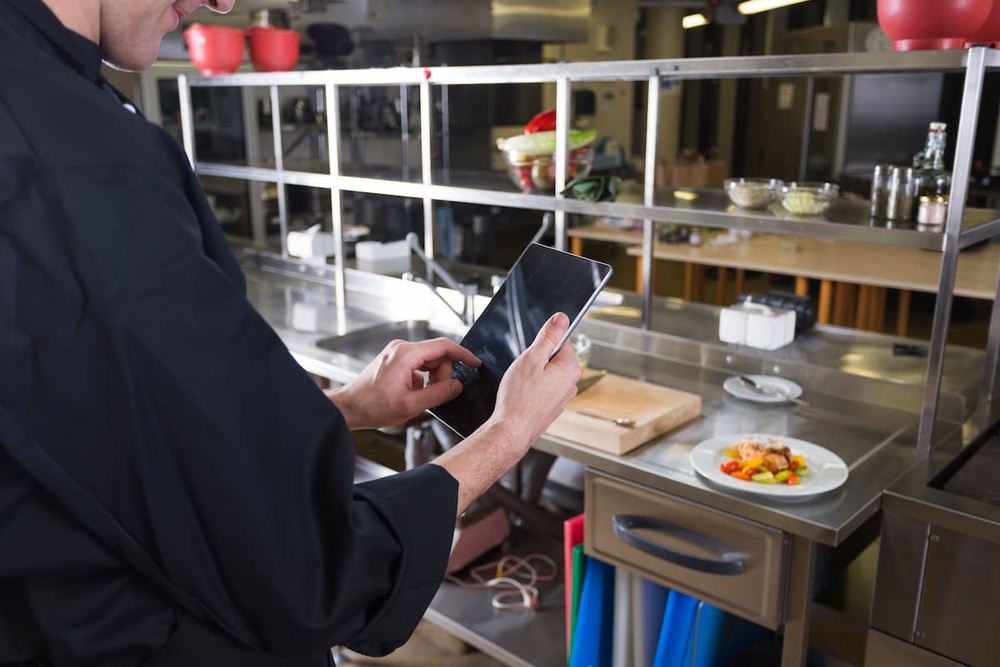Most popular Asian dishes for delivery: Korean, Vietnamese, and Filipino trends
Table of Contents
CloudKitchens
How many tacos can be delivered from a 1000sqft restaurant?
The same amount as a 200sqft ghost kitchen.
In the evolving landscape of food delivery, virtual restaurants are redefining how we experience global cuisines. Among the myriad of flavors, Korean, Vietnamese, and Filipino dishes have emerged as top contenders in the delivery scene.
Their rich flavors, cultural significance, and adaptability make them ideal for virtual restaurant menus to capture the essence of Asian culinary traditions.
The rise of Asian cuisine in food delivery
Asian cuisine has seen a significant surge in popularity within the food delivery sector. Dishes like Korean bibimbap, Vietnamese pho, and Filipino adobo have become staples in many households, offering comfort and exotic flavors. The convenience of enjoying these meals at home has contributed to their growing demand.
Also, food apps such as Uber Eats and DoorDash frequently report increased orders of Asian dishes, driven by consumer interest in bold flavors, healthier options, and comfort foods. The variety offered by Asian cuisines — from soups and stir-fries to grilled meats and rice dishes — makes them ideal for quick and flavorful meals.
Korean dishes making waves
The appeal of Korean food extends far beyond K-dramas and K-pop culture. Korean cuisine is known for its balance of bold spices, fermented flavors, and comfort food qualities. These characteristics make Korean dishes ideal for delivery — especially in virtual restaurants that want to capture a trendy and authentic culinary niche.
Bibimbap
A harmonious blend of rice, vegetables, meat (commonly beef), a fried egg, and spicy gochujang sauce, bibimbap offers a balanced and visually appealing meal. It’s also highly customizable, which makes it a flexible option for virtual restaurants.
Variations like dolsot bibimbap (served in a hot stone bowl) and vegetarian bibimbap are also gaining popularity among different customer segments.
Korean fried chicken
Known for its crispy double-fried texture and flavorful sauces, Korean fried chicken is often served in flavors such as soy garlic, sweet chili, and spicy gochujang. It’s a crowd favorite for its snackable format and indulgent taste. Side dishes like pickled radish and tteok (rice cakes) often accompany the meal.
Tteokbokki
This spicy rice cake dish, made with chewy rice cakes simmered in gochujang-based sauce, is a beloved Korean street food. Variations include cheese tteokbokki, seafood tteokbokki, and rose tteokbokki (a creamier, spicier version), making it appealing to a variety of palates.
Japchae and bulgogi
Japchae is a savory and slightly sweet noodle dish made with sweet potato starch noodles and stir-fried vegetables, often served with beef. Bulgogi, thinly sliced marinated beef grilled or stir-fried, is another staple that’s perfect for delivery. These dishes offer a balance of flavor and nutrition that makes them perfect for weekday lunches or dinners.
Read more: Tips for proper food delivery packaging: A guide for restaurants
Vietnamese favorites for delivery
Vietnamese cuisine offers a perfect combination of fresh herbs, savory broths, and zesty sauces — ideal for customers seeking light yet satisfying meals. Many dishes are built for transport and customization, making them ideal for virtual restaurants focused on clean, flavorful food with a health-conscious edge.
Pho
A fragrant noodle soup made with a clear beef or chicken broth simmered for hours, pho is usually served with rice noodles, fresh herbs, bean sprouts, and lime. Popular variations include pho bo (beef), pho ga (chicken), and vegan pho with mushrooms and tofu. Its warming qualities and customizable toppings make it a customer favorite.
Banh mi
This Vietnamese sandwich features a French baguette filled with ingredients like grilled pork, pâté, pickled carrots and daikon, cucumber, cilantro, and chili. Variants include banh mi thit nuong (grilled pork), banh mi ga (chicken), banh mi chay (vegetarian), and even fusion styles incorporating Korean bulgogi or Filipino adobo.
Bun cha
Grilled pork patties and slices served with vermicelli noodles, fresh greens, and dipping sauce, bun cha is light yet flavorful. It’s a popular dish in Hanoi and increasingly a hit with health-conscious diners.
Goi cuon and com tam
Goi cuon (fresh spring rolls) are rice paper rolls filled with shrimp, pork, vermicelli, and herbs, served with peanut or hoisin dipping sauce. Com tam (broken rice) is another versatile dish, often served with grilled pork, egg meatloaf, and fish sauce-based condiments. These dishes travel well and maintain freshness, making them ideal for delivery.
Filipino dishes gaining popularity
Filipino food has been steadily gaining international acclaim for its bold flavors and heartwarming dishes. Its balance of sweet, savory, and sour profiles makes it highly appealing to diverse palates. Filipino cuisine also lends itself well to family-style meals and comfort food, a rising trend in food delivery.
Adobo
Often considered the national dish of the Philippines, adobo involves marinated chicken, pork, or even tofu in a vinegar-soy sauce base with garlic and bay leaves. Regional variations include adobong puti (without soy sauce), adobong kangkong (water spinach), and adobong pusit (squid).
Sinigang
This sour tamarind-based soup includes various proteins such as pork, shrimp, or fish, with vegetables like okra, water spinach, eggplant, and radish. Modern twists include miso sinigang or sinigang sa watermelon, appealing to both traditionalists and adventurous eaters.
Lechon kawali
Deep-fried crispy pork belly, lechon kawali is typically served with liver sauce or vinegar. It’s perfect for sharing and pairs well with garlic rice or pancit (Filipino noodles). Other popular pork dishes include crispy Pata and Sisig.
Kare-kare and pancit
Kare-kare is a rich peanut-based stew often made with oxtail and vegetables, served with bagoong (fermented shrimp paste). Pancit refers to a variety of noodle dishes like pancit canton (stir-fried noodles), pancit palabok (with shrimp sauce), and pancit bihon (rice noodles with vegetables and meat). These offer hearty and satisfying options perfect for delivery.
Read more: The US food delivery scene: what the numbers say
Why these dishes are perfect for virtual restaurants
The adaptability and bold flavors of Korean, Vietnamese, and Filipino dishes make them ideal for virtual restaurant menus. Their components can be pre-prepared and assembled quickly, ensuring short preparation times and high order turnover.
Additionally, many Asian dishes are naturally suited to takeout and delivery. For example, noodle soups like pho and ramen are often delivered with broth and noodles packaged separately to preserve texture. Rice bowls, stir-fried noodles, grilled meats, and soups all maintain their flavor and integrity during transport.
However, these cuisines offer a wide array of vegetarian, gluten-free, and protein-rich options that cater to dietary trends and health-conscious consumers. Their vibrant, Instagram-worthy presentations also help drive online engagement and restaurant brand visibility.
Embracing the trend with CloudKitchens
For entrepreneurs looking to capitalize on the popularity of Asian cuisine, CloudKitchens offers the infrastructure to launch and scale virtual restaurants efficiently. By providing state-of-the-art kitchen spaces, delivery platform integrations, and logistical support, CloudKitchens enables restaurateurs to focus on crafting authentic dishes that resonate with today’s delivery-focused consumers.
With reduced overhead and access to high-demand delivery markets, launching a virtual kitchen with CloudKitchens allows culinary entrepreneurs to test new concepts, target diverse demographics, and iterate menus faster than ever before.
Ready to bring the flavors of Asia to your customers? Discover how CloudKitchens can help you launch your virtual restaurant today.
DISCLAIMER: This information is provided for general informational purposes only and the content does not constitute an endorsement. CloudKitchens does not warrant the accuracy or completeness of any information, text, images/graphics, links, or other content contained within the blog content. We recommend that you consult with financial, legal, and business professionals for advice specific to your situation.
More insights & stories
There’s more where that came from.
Get in the know and check out our additional insights


